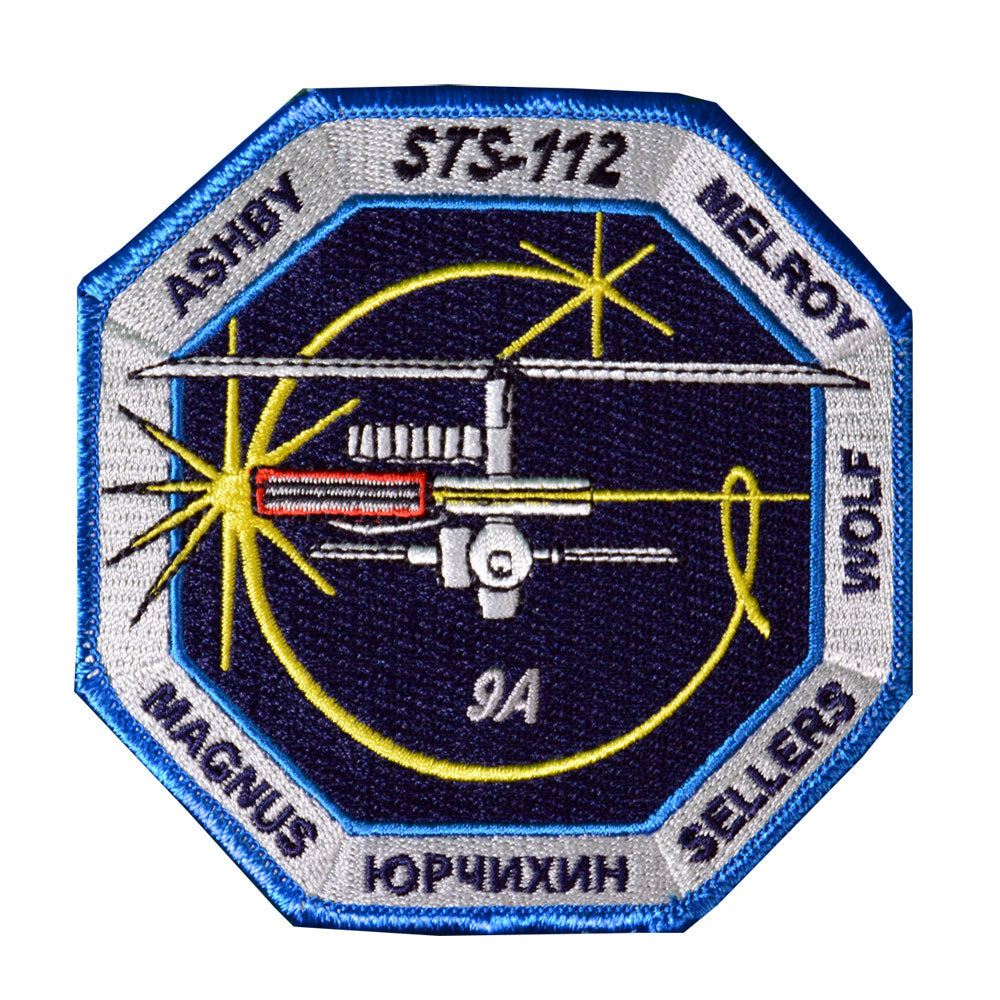
STS-112 Patch
Mission Highlights
Primary payloads were the S1 integrated truss segment and the Crew and Equipment Translation Aid (CETA) Cart A. The CETA is the first of two human-powered carts that will ride along the ISS railway, providing mobile work platforms for future spacewalking astronauts.
Activities included three spacewalks to attach the S1 truss to the space station. MS Sandra Magnus and ISS Science Officer Peggy Whitson lifted the 14-ton, 45-foot S1 truss from Atlantis’ payload bay using the station’s Canadarm2. They then attached it to the station with four remotely operated bolts.
Other chores were repairing the station’s exercise treadmill; adjusting protective circuits that measure current in the S1 truss radiator assembly to greater tolerance levels for space; removing and replacing a humidity separator in the Quest airlock.
Three spacewalks, totalling 19 hours, 41 minutes, accomplished the following:
EVA No. 1: 7 hours, 1 minute — MS David Wolf and MS Piers Sellers hooked up power, data and fluid lines, released locks on a beam allowing the S1 radiators to be oriented for optimal cooling, deployed an antenna, and released restraints on the CETA cart.
EV A No. 2: 6 hours, 4 minutes — Wolf and Sellers prepared CETA Cart A for future use, installed 22 Spool Positioning Devices on the space station ammonia-cooling line connections, installed an exterior TV camera outside Destiny, hooked up ammonia supply for lines to the S1 radiator, and checked equipment to be used to add the next starboard truss. Two additional SPDs would not fit and were left unattached.
EVA No. 3: 6 hours, 36 minutes — After completing their first task, removing a bolt that prevented activation of a cable cutter on the mobile transporter, Wolf and Sellers then connected ammonia lines and removed structural support clamps that held the truss in place during launch. Working ahead of schedule, they then added a task — installing Spool Positioning Devices on a pump motor assembly that helps circulate ammonia through the station’s cooling system. The station’s robotic arm, used as a work platform by the two spacewalkers, was operated by NASA’s ISS Science Officer Peggy Whitson and Mission Specialist Sandra Magnus.
Final activities on the space station included transferring the last of the equipment and supplies from Atlantis, and packing items for return on the orbiter. In all, 1,800 pounds were transferred and an equivalent amount stored for the journey back.


